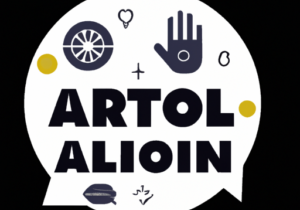In a recent podcast, Billy Bateman and Andrew Parker discussed the latest trends in automated messages. This topic is actually addressing the bigger trend of marketing automation, and it’s foreseeable revolutionary power.
Why Use Marketing Automation?
“Marketing automation drives a 14.5% increase in sales productivity and a 12.2% reduction in marketing overhead overall,” Salesforce announced, highlighting research done by Nucleus Research. In other words, there is huge statistical evidence behind using automated solutions. Not only will sales success increase dramatically, but the cost it takes to run the business will be reduced by over a tenth! Salesforce is a software company that deals directly with customer-relationship management. Their personal statistics on productivity prove to be even more impressive.
The stats from company to company vary, but Salesforce isn’t the only software company that is booming. Andrew Parker comments on another leading platform: “Marketo is one of the leading marketing automation platforms in the world. They put out a 2018 study claiming that 84% of all consumers across all industries expect their customer buying experience to be an integrated experience”. The idea of a homogeneous buying experience is eye-opening. Businesses are often oblivious to their outdated platforms. The push for good customer experience, not only in the store but across all online platforms, leads to a desperate online communication makeover.
The History Behind Omnichannel
In the late 1800s, magazines had become THE hot marketing tool. According to Industry Week, circulation for magazines hung around 750,000. But when the radio and television were invented, magazines were forced to retreat. These new platforms led to new ideas and strategies for marking. Thus, in the early 20th century, modern marketing was born. In the late 1900s the internet began its rise, and within 10 years had reached 750 million people. At this same time, Hotmail introduced email marketing- a free email service to “anyone with an Internet connection“- and it took off. Search engines from yahoo and google grew, with new ideas around ‘keyword density’ and ‘seasoning’. This forced other search engines to reorganize in order to keep up. Then, smartphones arrived, and the marketing world changed again. The iPhone and Android were introduced in the early 2000s, and apps became hugely popular.
This was the unintentional setup- then the marketing teams attacked. Customers started coming to them, instead of having to go out and find customers like in email marketing. The only issue was that this type of inbound marketing was extremely complex. With so many channels and a “constantly-expanding network of engagement”, it was an ever-increasing issue. Cue marketing automation! They integrated the already present email marketing with SEO compatibility, data clean up, social marketing, customer-relationship management, and more. This helped centralize and connect the vast diversity of ever-growing data. AND gave these marketers a way to track the whole thing.
The Future
In the last 5 years, marketing automation has evolved into a 1.65 billion dollar industry, involving about 142,000 businesses. New technology is being discovered and created to face new problems- and we believe that marketing automation is the future of online marketing. Whether large business, small business, or somewhere in between, there are resources and tools out there for you. Andrew Parker dives deeper into the best marketing tech stacks in the last 10 minutes of his podcast- found here. What has worked best for you, and what recommendations would you give to facilitate an omnichannel voice in sales and marketing communications? Or what have we missed? Let us know in your comments below!
If you’re interested in using live chat or automated bots to engage with your customers, we would love to help. Book a free 10-minute consultation to revolutionize your bots!
READ MORE
Start seeing your Buyers' signals
Signals is helping companies automate, grow, and close sales pipeline with industry-leading predictive intent scoring, lead generation, and real-time engagement.




















